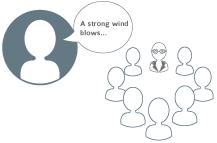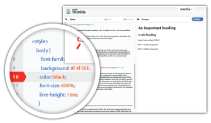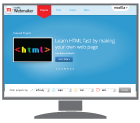

<html>, <head>, <title>, <body>, <h1>,<h2>, etc, <p>, <ul> & <ol>, <li>, <img>, <a>
In the How-to session my participants will learn how to wrangle web design, HTML and CSS by making their own web pages, swapping images, closing broken tags and creating their own how-to tutorials.



When they're finished with their reviews, ask them what next steps would be for each project. How can each project be iterated and improved upon?